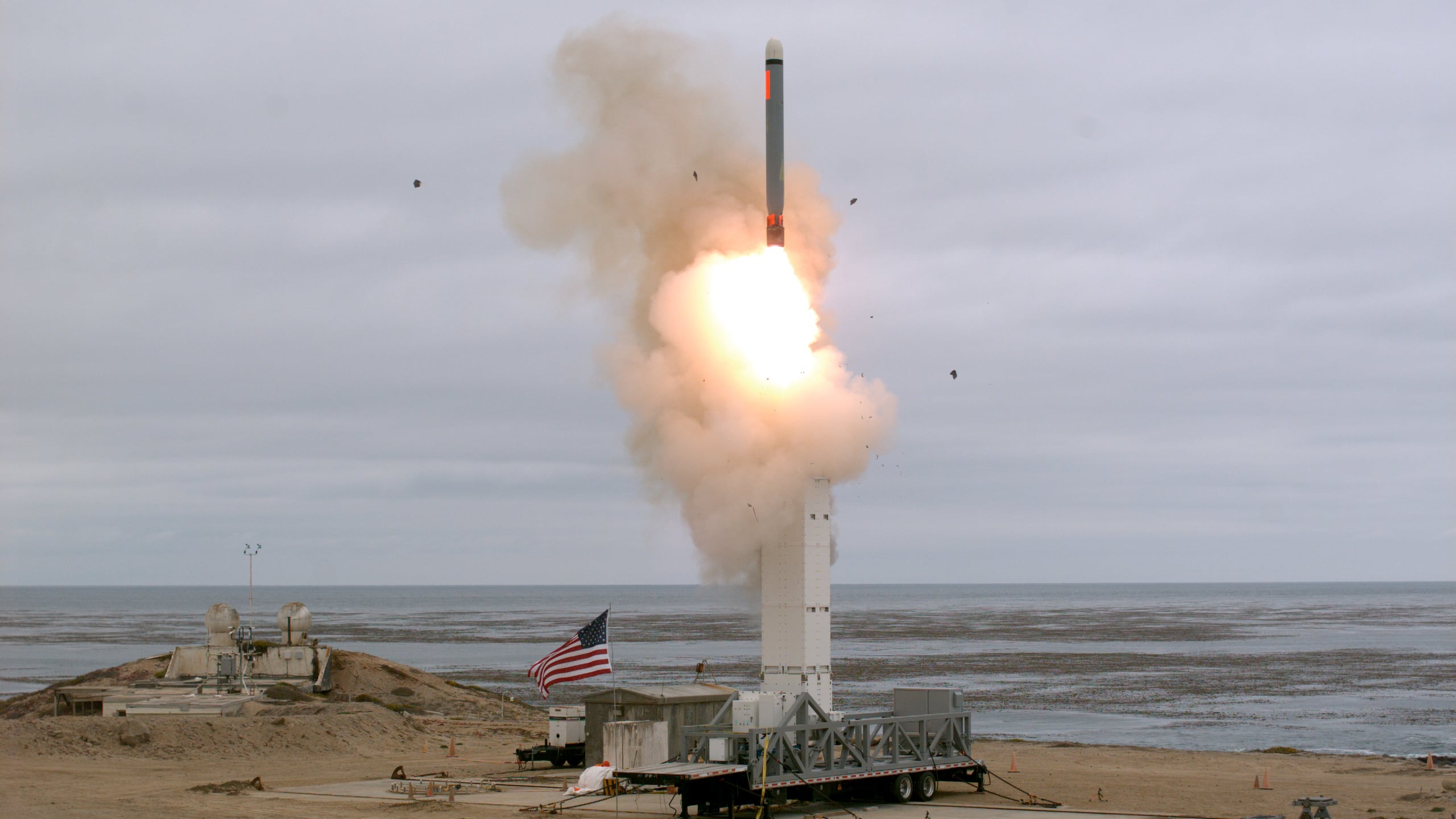WASHINGTON — The U.S. may be set to test a new ground-launched ballistic missile in the coming weeks, the first test of that particular weapon since the country withdrew from the Intermediate-Range Nuclear Forces Treaty earlier this year.
In March, Pentagon officials told reporters that they intend to test an intermediate range ballistic missile in the November time frame. At the annual Defense News Conference in September, Robert Soofer, deputy assistant secretary of defense for policy for nuclear and missile defense, confirmed that the Pentagon is roughly on track for that test.
“I do believe it is still the plan to conduct a ballistic missile test before the end of the year," he said then.
Asked about Soofer’s comments and whether those tests are still planned, Pentagon spokesman Lt. Col. Robert Carver could not “confirm or deny a test will take place in November. I am unable to provide any details on testing dates, times or locations.”
RELATED

The test, should it happen as planned, is expected to involve a ballistic missile with a potential range of roughly 3,000-4,000 kilometers. Pentagon officials previously speculated that any deployment of such a weapon, potentially to Guam, would not be likely for at least five years.
The United States exited the INF Treaty on Aug. 2, following through on a decision made late last year that the agreement no longer benefited American interests. The INF Treaty was a 1987 pact with the former Soviet Union that banned ground-launched nuclear and conventional ballistic and cruise missiles with ranges of 500 to 5,000 kilometers. However, the United States and NATO allies have for years declared Russia in violation of the agreement. Russia has denied those accusations.
American officials have stressed they do not plan to build nuclear-capable systems that would have busted the INF Treaty’s limits, but Defense Secretary Mark Esper said his department will “fully pursue the development of these ground-launched conventional missiles as a prudent response to Russia’s actions and as part of the joint force’s broader portfolio of conventional strike options.”
Among arms control advocates, the idea of post-INF weapons are worrisome. Kingston Reif, of the Arms Control Association, said the pursuit of conventional ground-launched intermediate-range missiles is “militarily unnecessary, would force difficult and contentious conversations with and among allies, and likely would prompt Russia and China to take steps that would increase the threat to the United States and its allies.”
“A 3,000- to 4,000-kilometer-range ballistic missile would pose a much more direct threat to the Russian and Chinese homelands,” Reif said. “It seems highly unlikely U.S. allies in Europe or Asia would host a missile that could strike deep into Russia and China in a matter of minutes. We could deploy such a missile in Guam, but their survivability wouldn’t be assured there, thereby increasing crisis instability.”
Tom Karako, of the Center for Strategic and International Studies, countered that the focus shouldn’t be on the delivery system itself, nor if it could be done by an air- or sea-based system instead of by land.
“The better question is what posture and what cost-effective mix of capabilities can impose on our adversaries the most vexing set of problems, especially for their surveillance and targeting,” he said. “Up against Russia and China, the benefits of ground-based strike systems need to be part of the conversation for answering that question.”
The Pentagon is investing in several alternative ground-based systems, such a heavy focus on hypersonic weapons, including the Army’s Long Range Hypersonic Weapon program. Investing in several options for that force posture mix is important, Karako said, so that the United States can avoid getting locked into one solution which, if countered, would leave the country vulnerable.
“We can’t afford a force structure composed of a small number of silver bullets. It makes good sense to pursue a variety of delivery systems, trajectories, ranges, velocities, propulsion types and basing domains to support broad defense and deterrence goals,” he said. “The future form of future strike will almost surely include a mix of UAVs, cruise missiles, ballistics and hypersonic glide vehicles. An IRBM for ourselves and our friends may well have a place in that mix.”
Just what the test might look like is unknown at this time. Something like a land-based version of the Standard Missile-3 Block IIA, usually launched from a ship or during the first stage of an ICBM, would fit the rough range target. Another potential option might be modifying and launching a ground-based interceptor, part of the missile defense network; going down that path, Reif warned, would “raise all sorts of complications,” as that system was meant to solely serve a defensive purpose.
A cruise missile test in August involved a variant of the Tomahawk land-attack weapon launched from a Mark 41 Vertical Launch System. While the Mark 41 is the same launcher used in the Aegis Ashore missile defense system, the Pentagon said at the time that this was a different variation on the Mark 41 and does not mean that Aegis Ashore could be turned into an offensive capability — something Russia has long claimed in objecting to Aegis basing in Europe.
Updated 11/14 at 5:36 PM to clarify Reif’s quote.
Aaron Mehta was deputy editor and senior Pentagon correspondent for Defense News, covering policy, strategy and acquisition at the highest levels of the Defense Department and its international partners.





